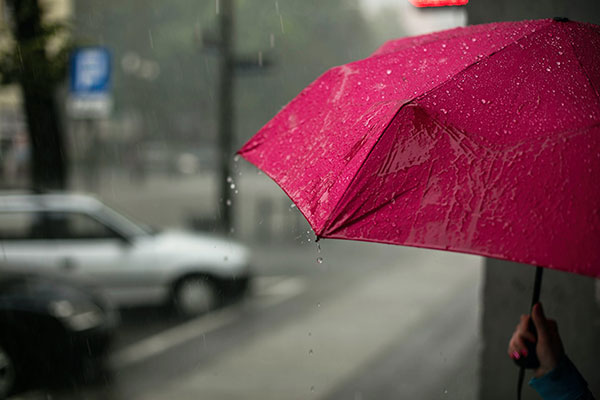What is it?
Personal liability insurance protects your assets if you injure another person or damage someone else’s property. It’s known as third-party insurance because it protects you if a third party files a claim against you. If you are found legally responsible for causing an injury or property damage, your personal liability insurance will provide a legal defense, if necessary, and pay the claim up to the limits of the policy. Personal liability insurance can be purchased as part of a package policy (such as a homeowners or automobile insurance policy) or as a separate policy (such as a personal umbrella liability policy).
Determining your need for personal liability insurance
Do you need personal liability insurance?
Some people mistakenly believe that personal liability insurance is necessary only if you are wealthy (and more likely to be sued because you have more assets than most people) or if you are reckless. However, accidents can happen anywhere or to anyone. You may, for instance, hit a bicyclist or accidentally spill hot coffee on your neighbor’s arm. Your cat may scratch your neighbor’s car or your friend may fall down your icy stairs. No matter how careful you are, you may one day be sued because you injured someone or damaged someone’s property. Although you can’t avoid all accidents, you can transfer some of the financial risk you face to an insurance company by buying personal liability coverage.
Tip: Liability coverage under your policy may extend to your relatives as well. For instance, your father may be covered if he drives your car and injures another driver. Or, if your child accidentally breaks your neighbor’s window, your policy may pay the damages resulting from the claim. Check your liability policy to determine how it defines a relative because the definition varies from policy to policy.
How much personal liability coverage do you need?
You probably need more liability coverage than you think you do, even if you have few assets to protect. Lawsuits and claims are being filed more frequently than in the past, and the cost of defending yourself may be high. If you have no liability insurance, you will likely have to pay the entire cost out of pocket. If you do have liability insurance, your insurance company might settle out of court because in a major suit, your insurer’s legal fees can exceed your policy’s liability limit. In addition, juries frequently award damages that exceed the actual monetary amount of damage done. They award money for pain and suffering, mental anguish, and punitive damages. Even if you have liability insurance, you may find yourself owing money if court-ordered damages against you exceed the liability limits of your policy. If you don’t have the money to pay damages now, your future earnings and assets may be subject to liens and/or garnishment.
Because there’s no optimum amount for every individual, how much personal liability coverage you need depends partly on your tolerance for risk. Can you afford to pay the cost of a claim out of pocket or would even a small claim threaten your finances? If you already have liability coverage, take a look at your current policy. Determine whether your liability limits are high enough, or if there are any coverage gaps you’d like to fill (see below for more information on coverage under typical personal liability policies).
Basic liability protection under a homeowners or automobile insurance policy
If you own a homeowners or automobile insurance policy or another type of property insurance (e.g., mobile home insurance or renter’s insurance), you have basic liability coverage. These policies will protect you against many liability claims. Your insurance company will defend or settle claims and lawsuits brought against you and pay the sum owed for covered damages (bodily injury or property damage) up to the liability limits of the policy (usually $100,000 to $300,000 per occurrence). No deductible applies. If you want maximum liability coverage or if you want broader coverage, consider purchasing a personal umbrella liability policy (see below).
Tip: Bodily injury and property damage liability insurance for automobile owners is often mandatory under state law, although a few states don’t require you to carry even basic automobile insurance. When required, mandatory minimum liability limits are usually low ($40,000 per accident is common). Bodily injury and property damage liability insurance for automobile owners is usually sold with split limits (e.g., $100,000/$300,000/$50,000), which means that your policy provides coverage up to $100,000 for any one person you injure, $300,000 for all the people you injure, and up to $50,000 for property damage.
Comprehensive personal liability insurance coverage under a personal umbrella liability policy
What is a personal umbrella liability policy?
A personal umbrella liability policy supplements the basic liability protection you already have by insuring you against large losses or losses not covered under your other personal liability policies. Although an umbrella policy is often added to an existing homeowners or automobile policy, it can also be purchased as a stand-alone policy from a different insurer. In either case, your insurer will ordinarily require you to carry basic liability insurance with certain minimum limits.
Example(s): Before his insurance company would issue him a $1 million umbrella policy, Hal had to raise his homeowners insurance liability limit to $100,000 and his automobile insurance liability limit to $100,000/$300,000/$50,000.
Higher liability limits than basic liability coverage
One reason to purchase a personal umbrella liability policy is that it will provide you with a higher amount of liability coverage than a basic liability policy. Umbrella liability policies are normally issued with a liability limit of $1 million per occurrence. However, the umbrella policy may pay numerous claims of $1 million each per policy period, so your actual protection may be more. Some companies set limits, however, on how much can be paid out during the policy period or over a lifetime. A common limit is $10 million. Since an umbrella liability policy is issued in conjunction with basic liability coverage, your total liability protection will be the combined limits of each policy. For instance, if you have an auto policy with a liability limit of $100,000 and a $1 million umbrella liability policy, then your total liability protection will be $1,100,000.
Broader coverage than other types of liability insurance
An umbrella liability policy will protect you from losses not covered under basic liability insurance. It covers you against damages for unusual occurrences, including personal injury losses due to libel, slander, wrongful eviction, false arrest, and invasion of privacy. Your umbrella liability policy might also pay for damages incurred worldwide. In addition, an umbrella policy might pay a proportionate share of a claim even if your basic liability insurance policy cannot pay its portion, either because you failed to comply with the conditions of the policy or because the company itself has become insolvent.
Claims are paid under an umbrella policy only after basic liability coverage is exhausted or unavailable
If you have purchased an umbrella liability policy, it will pay a claim in one of two main ways after you have satisfied a deductible:
- If you are found legally responsible for injuring someone or for damaging property, your umbrella policy will pay that part of the claim in excess of the liability limits under your basic liability coverage
Example(s): Hal purchased a homeowners insurance policy (with liability coverage of $100,000) and a $1 million umbrella liability policy. When Hal’s swimming pool sprang a leak and caused $25,000 worth of damage to his neighbor’s yard, Hal’s homeowners insurance paid the total claim. However, when Hal was sued after a rotting oak tree on his property toppled and injured his neighbor’s daughter, his homeowners liability coverage paid only the first $100,000 in damages (the liability limit on his policy). The remaining $900,000 of the court-ordered settlement was paid by Hal’s umbrella liability policy.
- Your umbrella liability policy will pay total damages for bodily injury and liability if the liability exposure is not covered under your basic liability coverage but is covered under your umbrella policy
Example(s): Hal borrowed his brother’s lawnmower and ran over his neighbor’s deaf cat that was napping in the yard. Because the damage was caused by nonowned property in Hal’s care (which is specifically excluded from his homeowners policy liability coverage), Hal’s personal liability umbrella policy paid the $1,500 veterinary bill.
Caution: Although a personal umbrella liability policy is sometimes called excess personal liability insurance, it is really not the same thing. Excess liability insurance typically provides additional coverage only if the basic policy provides coverage as well, whereas an umbrella liability policy will provide coverage that is sometimes different than that provided under the basic liability policy.
What personal liability insurance does not cover
Although a personal umbrella liability policy covers more types of hazards than basic personal liability policies, no personal liability insurance policy will protect you against every loss you might face. All types of personal liability insurance generally exclude the following:
- Claims stemming from the insured’s business or profession (some types of business activities may be covered under a homeowners or automobile policy, so check your policy)
- Claims resulting from the insured acting intentionally to cause injury or damage
- Damage to property owned by the insured
Other common exclusions under a homeowners policy are damage caused by communicable diseases and acts of war. An automobile policy might exclude accidents and losses that occur overseas or while a vehicle is in transport. Umbrella policies often exclude liability losses related to aircraft, damages caused by watercraft not covered under your homeowners policy, or injuries suffered by someone covered by workers’ compensation.
Questions & Answers
Can anyone purchase a personal umbrella liability policy?
No. It’s the underwriter’s job to determine who may purchase a personal umbrella liability policy. Once an individual has applied for the policy, the underwriter will evaluate the application and may reject applicants who pose an undue risk to the company. For instance, broadcasters may be denied coverage because they face a high risk of claims alleging personal injury. Politicians and actors may be denied coverage because their jobs expose them to publicity. Individuals whose property poses a hazard (such as someone who owns an unfenced swimming pool) may also be denied coverage.
Is a personal umbrella liability policy expensive?
Not for the coverage it offers. An umbrella liability policy will generally cost between $150 to $300 per year and will significantly expand liability coverage (typically $500,000 to $1 million of coverage). However, you may also pay more for your homeowners or automobile coverage if you are required to increase your policy limits.



